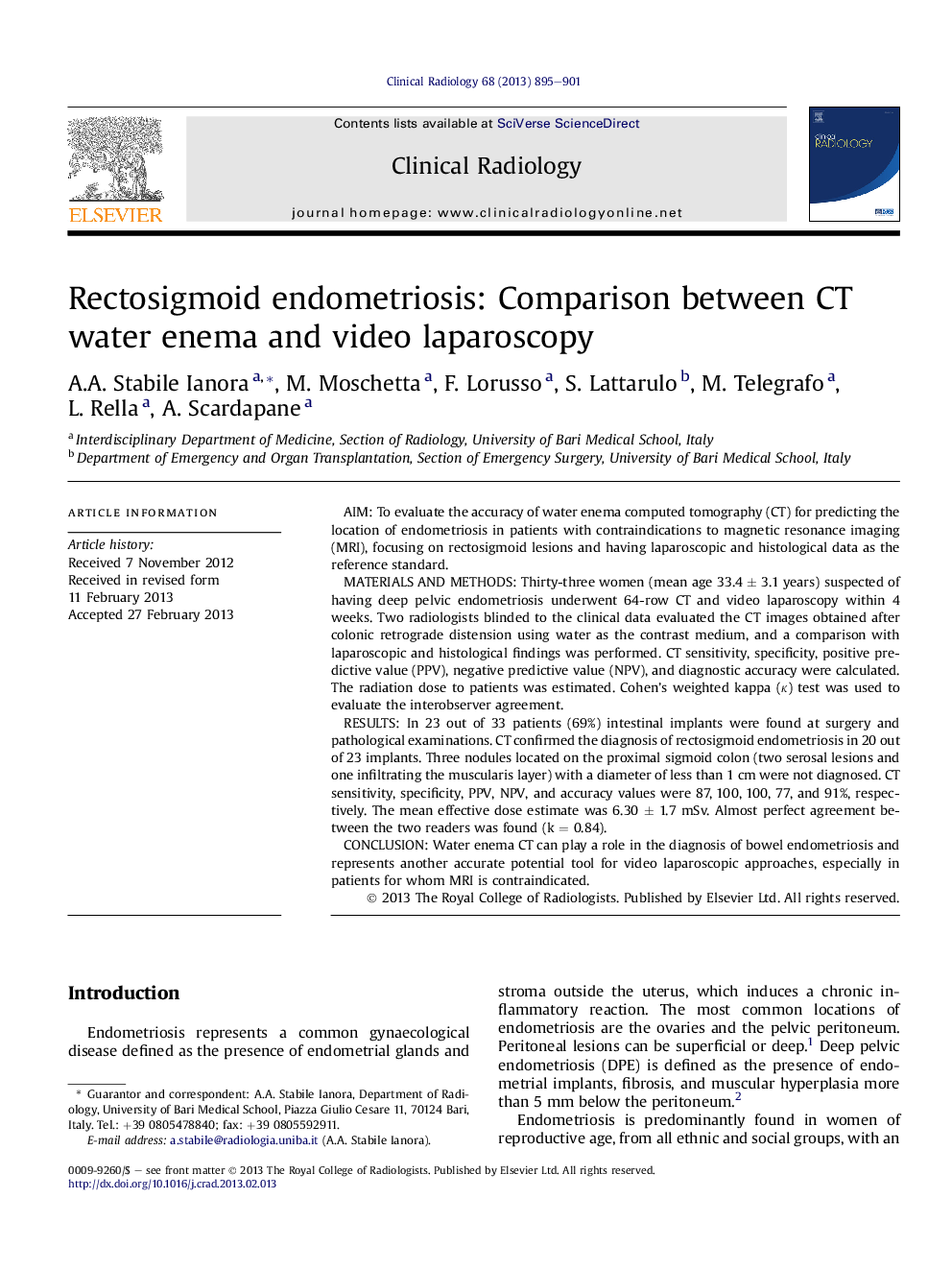| Article ID | Journal | Published Year | Pages | File Type |
|---|---|---|---|---|
| 3982549 | Clinical Radiology | 2013 | 7 Pages |
AimTo evaluate the accuracy of water enema computed tomography (CT) for predicting the location of endometriosis in patients with contraindications to magnetic resonance imaging (MRI), focusing on rectosigmoid lesions and having laparoscopic and histological data as the reference standard.Materials and methodsThirty-three women (mean age 33.4 ± 3.1 years) suspected of having deep pelvic endometriosis underwent 64-row CT and video laparoscopy within 4 weeks. Two radiologists blinded to the clinical data evaluated the CT images obtained after colonic retrograde distension using water as the contrast medium, and a comparison with laparoscopic and histological findings was performed. CT sensitivity, specificity, positive predictive value (PPV), negative predictive value (NPV), and diagnostic accuracy were calculated. The radiation dose to patients was estimated. Cohen's weighted kappa (κ) test was used to evaluate the interobserver agreement.ResultsIn 23 out of 33 patients (69%) intestinal implants were found at surgery and pathological examinations. CT confirmed the diagnosis of rectosigmoid endometriosis in 20 out of 23 implants. Three nodules located on the proximal sigmoid colon (two serosal lesions and one infiltrating the muscularis layer) with a diameter of less than 1 cm were not diagnosed. CT sensitivity, specificity, PPV, NPV, and accuracy values were 87, 100, 100, 77, and 91%, respectively. The mean effective dose estimate was 6.30 ± 1.7 mSv. Almost perfect agreement between the two readers was found (k = 0.84).ConclusionWater enema CT can play a role in the diagnosis of bowel endometriosis and represents another accurate potential tool for video laparoscopic approaches, especially in patients for whom MRI is contraindicated.
